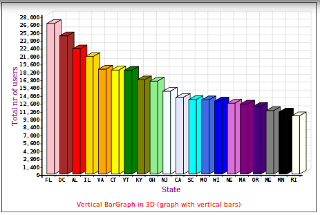 Support for Drupal 7 is ending on 5 January 2025—it’s time to migrate to Drupal 10! Learn about the many benefits of Drupal 10 and find migration tools in our resource center.
Support for Drupal 7 is ending on 5 January 2025—it’s time to migrate to Drupal 10! Learn about the many benefits of Drupal 10 and find migration tools in our resource center. Forena Reports is built of the idea of using SQL to get data out of a database and use XHTML and CSS to format it into web reports.
Forena Reports is built of the idea of using SQL to get data out of a database and use XHTML and CSS to format it into web reports.
It is designed to leverage existing knowledge of HTML, CSS, SQL and JavaScript to help you create rich interactive web reports.
As an alternative, Forena can also be used for reports and charts about data stored in XML files.
Report editor alternatives
WYSIWYG Report Editor
Novice users may want to start by creating reports & charts using the built-in What You See Is What You Get (WYSIWYG) compatible report editor, for which a WYSIWYG Reporting Guide is available to get started. This editor makes the creation of a basic reports very easy. You don't have to know XHTML and CSS to create a simple report, but the more you now about HTML and CSS, the more you will be able to achieve.
FRX Report Editor
Users with knowledge of XHTML, CSS and XML may choose to edit the FRX report definition files directly. Checkout this real world example of an FRX file, together with this PDF file containing a preview of the report/chart that was created from it. The FRX Reporting Guide is available for those who are interested in doing so.
Supported database connections
Forena supports database connections to DBMSs or file formats such as:
- Drupal (= any of a site's own Drupal tables).
- MSSQL Databases.
- Oracle Databases.
- PDO other than Drupal, such as MySQL or SQLite.
- Postgres Database.
- XML Files.
Comparison with other open source reporting solutions

The main differences with other open source reporting solutions are:
- Forena leverages HTML and XML in ways that these report engines do not. In Forena everything is XHTML natively, so that is your templating language. This means rather than having users enter parameters, most often they are doing click-through drilling down to their data. Forena produces paper as a secondary thing rather than a primary concern. We are NOT interested in printing most of the time, but rather exploring the data.
- Forena lets you consume hierarchical data from non-relational sources such as RSS feeds, etc (anything in XML format) and has special considerations for databases that can generate XML natively (e.g. Postgres or Oracle SQL).
- Forena is designed to make generating data sources and reports be report developer friendly. Data queries, often called data blocks, are simple files that can be version controlled and edited using normal development tools. They are often parameterized SQL files, so they don't take much to use. Time from a good select statement to a report is typically 5 minutes or less.
- Forena doesn't require a Java stack! So you can install it on a hosting service, etc.
Native Charting Solutions
Forena is one of the available options to consider for creating various types of charts. Checkout the Comparison of Charting modules for details about Forena's charting features as compared to some of the other native charting modules that are typically used for charting, such as Chart or Charts.










